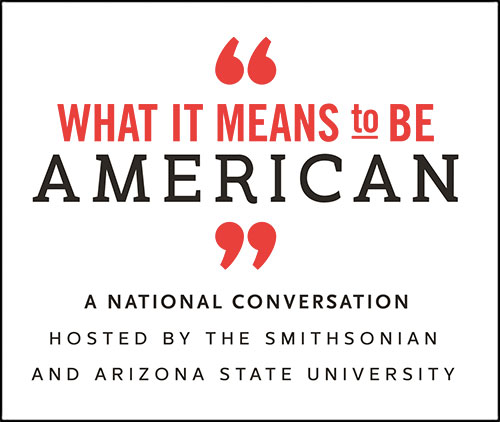
 On September 7, 1964, a 60-second TV ad changed American politics forever. A 3-year-old girl in a simple dress counted as she plucked daisy petals in a sun-dappled field. Her words were supplanted by a mission-control countdown followed by a massive nuclear blast in a classic mushroom shape. The message was clear if only implicit: Presidential candidate Barry Goldwater was a genocidal maniac who threatened the world’s future. Two months later, President Lyndon Johnson won easily, and the emotional political attack ad—visceral, terrifying, and risky—was made.
On September 7, 1964, a 60-second TV ad changed American politics forever. A 3-year-old girl in a simple dress counted as she plucked daisy petals in a sun-dappled field. Her words were supplanted by a mission-control countdown followed by a massive nuclear blast in a classic mushroom shape. The message was clear if only implicit: Presidential candidate Barry Goldwater was a genocidal maniac who threatened the world’s future. Two months later, President Lyndon Johnson won easily, and the emotional political attack ad—visceral, terrifying, and risky—was made.
Half a century later, we live in the world of negative political advertising that Daisy Girl pioneered, but there are some curious aspects to the story. First, though it is a famous ad, Daisy Girl, as the ad is known, only ran once. Secondly, it didn’t even mention Goldwater’s name. And finally, by the time the ad ran, Goldwater’s chances against LBJ were slim, even though the ad is often falsely credited with assuring the win. And there were two dozen other ads from LBJ’s camp—humorous, informative, dark, and neurotic. Daisy became the iconic spot of its era not because it was the first Johnson ran in 1964; we remember it primarily because of its brilliant, innovative approach to negative advertising.
Daisy and the other ads were made by Doyle Dane Bernbach (DDB), an eclectic group of ad men at a medium-sized Madison Avenue firm with a stellar reputation for groundbreaking campaigns for Volkswagen and Avis. They didn’t set out to revolutionize political advertising; what they wanted to do was to break the established rules of political ads—then dominated by stodgy 30-minute speeches mixed with shorter policy-focused spots—by injecting creativity and emotion.
Bill Bernbach, the firm’s principal founder, had long maintained advertising was an art, not a science. He favored intuition. He often reminded his employees, “Playing it safe can be the most dangerous thing in the world, because you’re presenting people with an idea they’ve seen before, and you won’t have an impact.”
Famously dismissive of advertising driven purely by research, Bernbach had written a revolutionary memo in 1947 that laid out the philosophy that would eventually characterize his firm’s work. “Advertising is fundamentally persuasion and persuasion happens to be not a science, but an art,” he brashly told his then-employer, Grey Advertising. “It’s that creative spark that I’m so jealous of for our agency and that I am so desperately fearful of losing. I don’t want academicians. I don’t want scientists. I don’t want people who do the right things. I want people who do inspiring things.”
Inspired by Bernbach’s philosophy of relying upon instinct as much or more than research, DDB produced an extraordinary and memorable series of spots for Johnson. The firm capitalized upon Goldwater’s reckless statements by providing viewers with indelible images. DDB mocked Goldwater’s vote against the nuclear test ban treaty with a spot showing nothing but a girl licking an ice cream cone as a female announcer spoke ominously about the fallout from atmospheric nuclear testing and how it might enter the food supply.
Goldwater had once bragged that the nation might be “better off if we could just saw off the Eastern Seaboard and let it float out to sea.” So, DBB served up a humorous 60-second spot of a saw slicing the East Coast from a Styrofoam model of the United States. In another spot, DDB mocked Goldwater’s statement about privatizing Social Security by showing a pair of hands ripping up a Social Security card.
Viewers had never seen anything like this. It’s not that previous presidential campaigns had only been polite affairs. Dwight Eisenhower ran negative TV spots against his Democratic opponent, Adlai Stevenson, in 1952, subtly tying him to alleged corruption in Truman administration officials. Stevenson’s spots attacked Eisenhower in 1956. John F. Kennedy attacked Richard Nixon’s record as vice president in the 1960 campaign. Goldwater’s attacks against Johnson in 1964 were unrelenting. In almost every case, however, the attacks were rational, fact-based arguments. DDB’s innovation was not negative advertising, per se. It was, rather, to help make emotions (primarily, fear) a staple of political spots. By 1968, political ads—by other agencies—were also transformed.
Even the spot itself was something of a DDB innovation. Before 1964, political campaigns had used 30- and 60-second spots, but not exclusively. Instead, campaigns, including Goldwater’s, pre-empted regular programming with dry, 30-minute speeches or campaign documentaries by candidates. Under DDB’s direction, Johnson’s campaign aired nothing but 30- or 60-second spots, with the exception of two four-minute commercials, including the “Confessions of a Republican” ad (which went viral recently) purporting to show that even Republicans found Goldwater uncomfortably extreme.
DDB broke another rule by recognizing that Goldwater was such a widely known figure that voters needed no education about him. They didn’t have to remind viewers that Goldwater himself had joked about lobbing a missile into the men’s room of the Kremlin. Or that he had written that the U.S. should not fear war with the Soviets. Or that he would give NATO commanders authority to use nuclear weapons without prior presidential authorization. Or that he had declared the nuclear bomb “merely another weapon.” America knew he voted against the Civil Right Act and that, at the GOP convention in July 1964, Goldwater even branded himself an “extremist.” So DDB never once had to mention Goldwater’s name in Daisy. It only had to find viewers’ emotional trigger.
Put another way, the firm believed that viewers should not be given too much information to put their minds and emotions to work. And Daisy Girl’s DNA has continued to provide instructions for today’s political advertising: Ronald Reagan’s famous 1984 “Bear” spot used the animal to symbolize the Soviet Union without explicitly making the association. In 2004, Bush’s campaign skillfully employed the same technique with a spot that used wolves to symbolize al Qaeda.
Voting is not a purely rational act. As the late journalist Joe McGinnis observed, it’s a “psychological purchase” of a candidate. It’s often no less rational than buying a car or a house. DDB understood that arguing with voters would be a losing proposition. To persuade someone, especially in the political realm, a campaign must target emotions. Voters don’t oppose a candidate because they dislike his or her policies; they often oppose the policies because they dislike the candidate.
Reagan’s optimistic 1984 “Morning in America” spot was a good example of this kind of appeal. So was George H.W. Bush’s dark, fear-inducing “Revolving Door” spot in 1988 that exploited the controversy over a prison furlough program of his Democratic opponent, Michael Dukakis. Bernie Sanders’ “America” spot is a current example. They are all very different ads, but are aimed at generating a non-rational, emotional response.
DDB also believed that giving data and facts was less persuasive than telling a story. The best spots provide an experience. In addition to evoking emotions and not repeating what the viewer already knew, many of the DDB spots from 1964 had a narrative arc to them. A good example in 1964 was a Johnson spot reminding viewers of the many harsh attacks on Goldwater by his former GOP opponents. The gold standard for subsequent spots in this genre may be Bill Clinton’s 60-second “Journey” spot from 1992, in which he touted his small-town American values by recounting his childhood in Hope, Arkansas.
Early in his career Bernbach perceived that although research had its place in persuasion, there was something more—something completely unquantifiable: “The truth isn’t the truth until people believe you and they can’t believe you if they don’t know what you’re saying; and they can’t know what you’re saying if they don’t listen to you; and they won’t listen to you if you’re not interesting. And you won’t be interesting unless you say things freshly, originally, imaginatively.”
For better or worse, the Daisy ad made emotions a much more potent weapon in our political campaigns, employing techniques that had previously only been applied to selling cars and soap. The next innovation, already with us to some degree, is nano-targeted TV spots, which will resemble the ads we see on the web but will be on TV. Soon, working with cable providers, candidates will offer up messages specially crafted for certain viewers. Five different people watching the same program might each see a different spot from the same candidate.
Meanwhile, social media has injected campaigns’ storytelling into communication between friends. Without Daisy, would the Facebook flame wars of Trump and Bernie fans have the same raucous fervor? But as campaigning moves further into the virtual world of computers and algorithms, it must overcome a paradox: Now, as then, the best ad campaign has a soul—and that’s something a computer or a poll can’t create for any candidate.




Send A Letter To the Editors